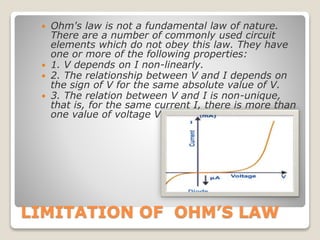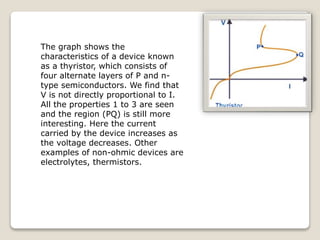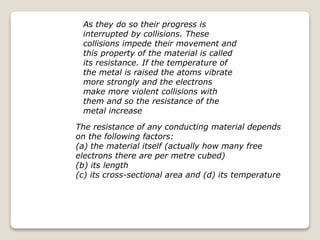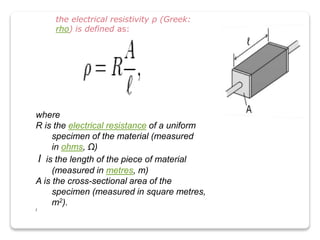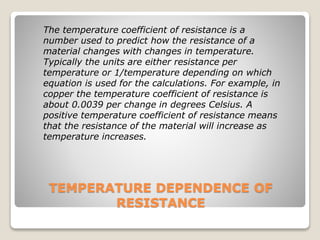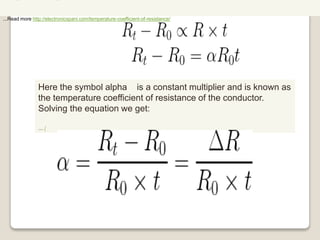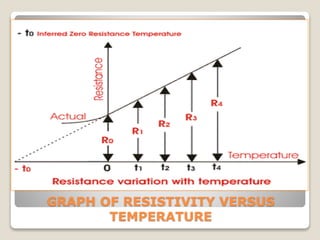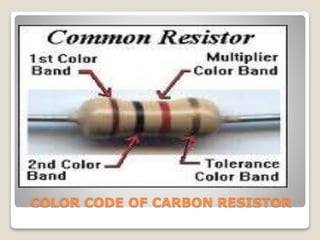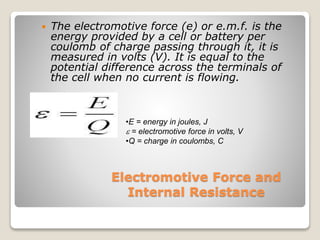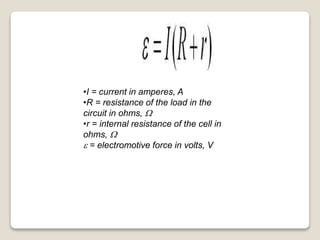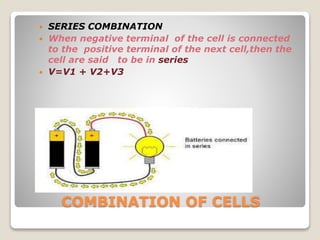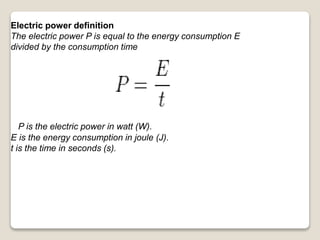The document introduces the concept of current electricity, focusing on Ohm's law, which establishes a direct proportionality between voltage and electric current in conductors. It discusses the limitations of Ohm's law, factors influencing resistance, and phenomena like drift velocity and thermistors, as well as superconductivity and electromotive force. Additionally, it explores various formulas related to resistance, power, and work done in electric circuits.



